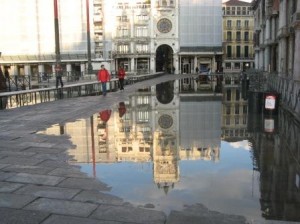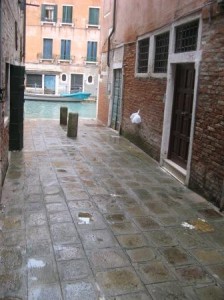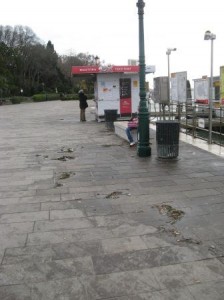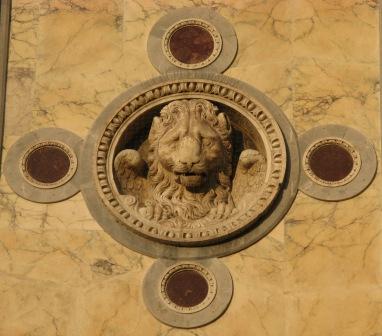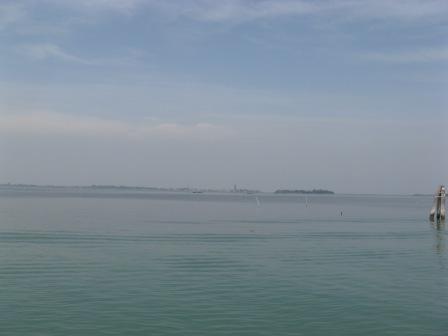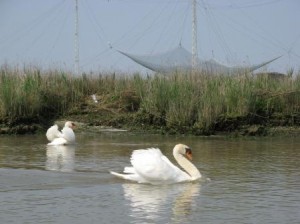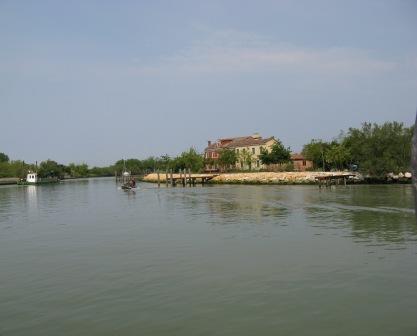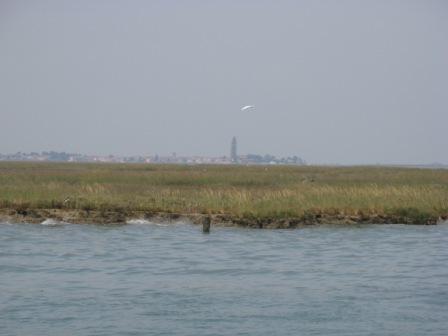(I discovered too late that my previous version needed some weeding at the end. This has been cleaned up. Apologies.)
January is a first-class month here (I’ll let you know if I think of one that isn’t).
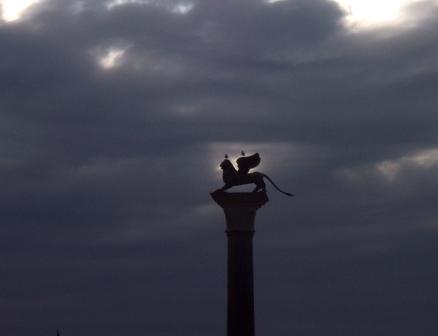 Nothing against gray. Gray can also be beautiful here, often more beautiful than blue.
Nothing against gray. Gray can also be beautiful here, often more beautiful than blue.I say this for two reasons. First, the end of the month — or more or less starting now — is composed of the so-called “giorni della merla,” or days of the blackbird. Specifically, the female blackbird, which isn’t black at all, but never mind, and who is commonly believed to be busy building her nest right now for her imminent new brood. This is the only intimation, however remote, of the eventual coming warmth.
 Gray actually has a lot of points in its favor.
Gray actually has a lot of points in its favor.This designation isn’t limited to Venice; our little interlude goes by the same name all over Italy. This brief span of days — specifically the last three of the month — are famous for being really cold; in fact, they used to be fairly dependably the coldest of the winter. Perhaps they’re not as cold now as they may once have been (though they’re plenty cold just the same), but if we didn’t get a sudden drop in temperature in late January I would be extremely upset. Just so you know.
Those more inclined toward literature than ecology may recall that this frigid period strikes just about on St. Agnes’ Eve, or January 20. John Keats’s eponymous poem, “The Eve of St. Agnes,” sets the mood:
“St. Agnes Eve — Ah, bitter chill it was! / The owl for all his feathers was a-cold; / The hare limp’d trembling through the frozen grass / And silent was the flock in woolly fold: / Numb were the Beadsman’s fingers, while he told / His rosary…” And so on. Odd that I can still remember that from high school.
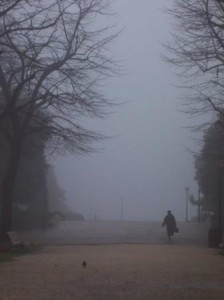 Unless you don’t like humidity, in which case gray is not your color.
Unless you don’t like humidity, in which case gray is not your color.So “days of the blackbird” is just a more attractive way of saying “cold snap,” though at the moment we’re in more of a gray snap. Between fog, snow sputters, and generally heavy overcast, the only light on the horizon is the dimly perceptible gleam of Carnival — a gleam not caused by the sun so much as by merchants’ smiles glinting off loose change.
The second reason I love January leads me to ask: Have you ever wondered where all the water of the acqua alta goes when the tide turns? There is a phenomenon which is particularly Venetian and again, I notice, dedicated to a female figure. In these few weeks, when the water gets let out of the lagoon it reveals the “seche de la marantega barola” (SEKK-eh deh la mah-RAN-tega ba-RO-la), or the exposed mudbanks of the shriveled old hag. The Befana, they mean, even though she went home two weeks ago.
I suppose they could have called them the seche of St. Agnes, but it just isn’t the same. From what I gather, it would have to have been rendered as the “exposed mudbanks of the young virgin martyr.” Not bad, but still.
The lagoon is particularly beautiful in two ways when the year begins. First, with real cold, the water becomes utterly pellucid. Peering down from the bridge over our canal, I can easily make out all sorts of debris in perfect detail, down to the number on a lost license plate settling into the mud. Out in the lagoon, the water has an amazing Caribbean/Greek island transparency.
Second, and just as beautiful as the water, is what you see when the water goes away. The “seche de la barola” are startling prairies of luxuriant emerald algae emerging from the shallows, replacing the usual water with verdant swathes worthy of Nebraska.
I love this, not only because it’s so strange (the first time, anyway), but because it shows in one of countless ways how alive the lagoon is. As the late-January twilight briefly weaves itself into the fading sky with soft skeins of mist, the tide silently turns and this extravagant greensward begins to imperceptibly sink beneath the water again. Imperceptible to me, perhaps, but not to the feeding waterbirds tiptoeing delicately among the soggy tussocks, seeking one last little morsel.
In the city, you may notice that the boats are very low at their moorings. One year I even saw boats sitting on bare mud along the shores of the Grand Canal. That was exciting. It was like being in Fowey, or one of those other little ports in Cornwall where the tide leaves fleets of pleasure boats sprawled yards and yards from the water’s edge.
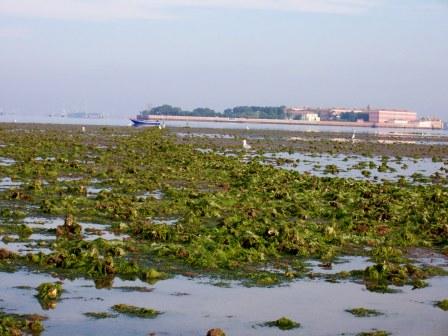 Oddly, this low tide happened at dawn in June a few years ago, rather than dusk in January. But you get the idea.
Oddly, this low tide happened at dawn in June a few years ago, rather than dusk in January. But you get the idea.The seche de la barola are well-known to the municipal tide office, which publishes the daily tide predictions on its website and also in the Gazzettino. One symptom of how the tides have gone haywire in general this winter isn’t so much (to my mind) the high water, though that makes such entertaining pictures. It was how the anticipated low tides refused to go low. They just refused. You can see it here:
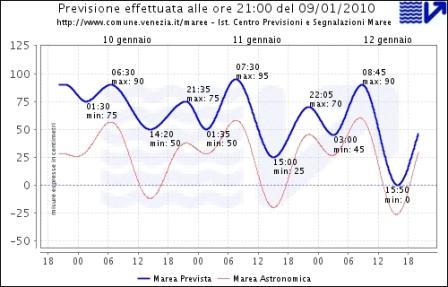 The lower line indicates the previously forecast high and low tide levels. The upper line traces what is really happening. Quite a difference. And this went on for days.
The lower line indicates the previously forecast high and low tide levels. The upper line traces what is really happening. Quite a difference. And this went on for days.To give you an idea of what I mean by “low,” here are some numbers on the seche a year ago.
|
Istituzione Centro Previsioni e Segnalazioni Maree |
||||||
|
Minimi di marea <-50 cm Punta della Salute – anno 2009 |
||||||
|
Estremali <-50 cm |
||||||
|
N ° |
Data |
Ora solare |
Valore |
|||
|
1 |
09-Jan-09 |
16.20 |
-52 |
|||
|
2 |
10-Jan-09 |
16.35 |
-57 |
|||
|
3 |
11-Jan-09 |
17.25 |
-58 |
|||
|
4 |
12-Jan-09 |
18.05 |
-59 |
|||
Minus 59 centimeters is 23 inches below the median sea level. Just so you know.
So come visit sometime in January, and see what the Befana left behind. She’ll be back next year to do it all over again.

